Northwest Africa 7892, CO3.0
This stone is one of the most pristine chondrites known.
All carbonaceous and ordinary chondrites have experienced some thermal and aqueous alteration. This meteorite has been officially designated a CO3.0, with data suggesting a subtype of CO2.X to CO3.X based upon the observed mean and standard deviation of ferroan olivine Cr2O3, when compared with the “CO3” ALH 77307 [3.05 based upon the high standard deviation of Cr2O3 observed in ferroan olivine]. That meteorite was originally classified as “C3,” but it has since been reclassified as CO3.0, despite having experienced substantial aqueous alteration.
The mean Cr2O3 observed in NWA 7892 is lower than that observed in Semarkona, and higher than that seen in ALH 77307. From Grossman and Brearley (2005):
The CO3 chondrites, including their relative the ungrouped carbonaceous chondrite Acfer 094, show olivine distributions that can be arranged in a sequence similar to that of ordinary chondrites (Fig. 5). Acfer 094, a highly primitive meteorite with properties similar to CM and CO chondrites (Newton et al. 1995), which is possibly more closely related to the more matrix-rich CM group (Rubin personal communication), and two CO3.0 chondrites, ALHA77307 and Y-81020, all have olivine distributions resembling Semarkona but with somewhat lower modes around 0.3–0.4 wt% Cr2O3 instead of 0.5. Colony, another meteorite classified as CO3.0, shows a slightly broader distribution of Cr2O3 in olivine, similar to that in type 3.1 ordinary chondrites of Fig. 4. Types 3.2 Kainsaz (Sears et al. 1991a; Chizmadia et al. 2002) and Rainbow show the same olivine distributions as are found in types 3.1–3.2 ordinary chondrites, with a peak around 0.1 wt% Cr2O3.
In other words, this meteorite, with the highest average ferroan olivine Cr2O3 content measured in a CO3 [39% ± 19%], is one of the least-metamorphosed CO3 chondrites in existence. But the σ-Cr2O3 observed is ~50% larger than that observed in the few other supposedly more metamophosed CO3s, which have correspondingly lower mean ferroan olivine Cr2O3 contents. This is hard to explain if the initial, pristine Cr2O3 mean concentration in ferroan olivine is as low as that seen in ALH 77307 [38% ± 7%]: see below, from The onset of metamorphism in ordinary and carbonaceous chondrites by Grossman and Brearley, 2005.
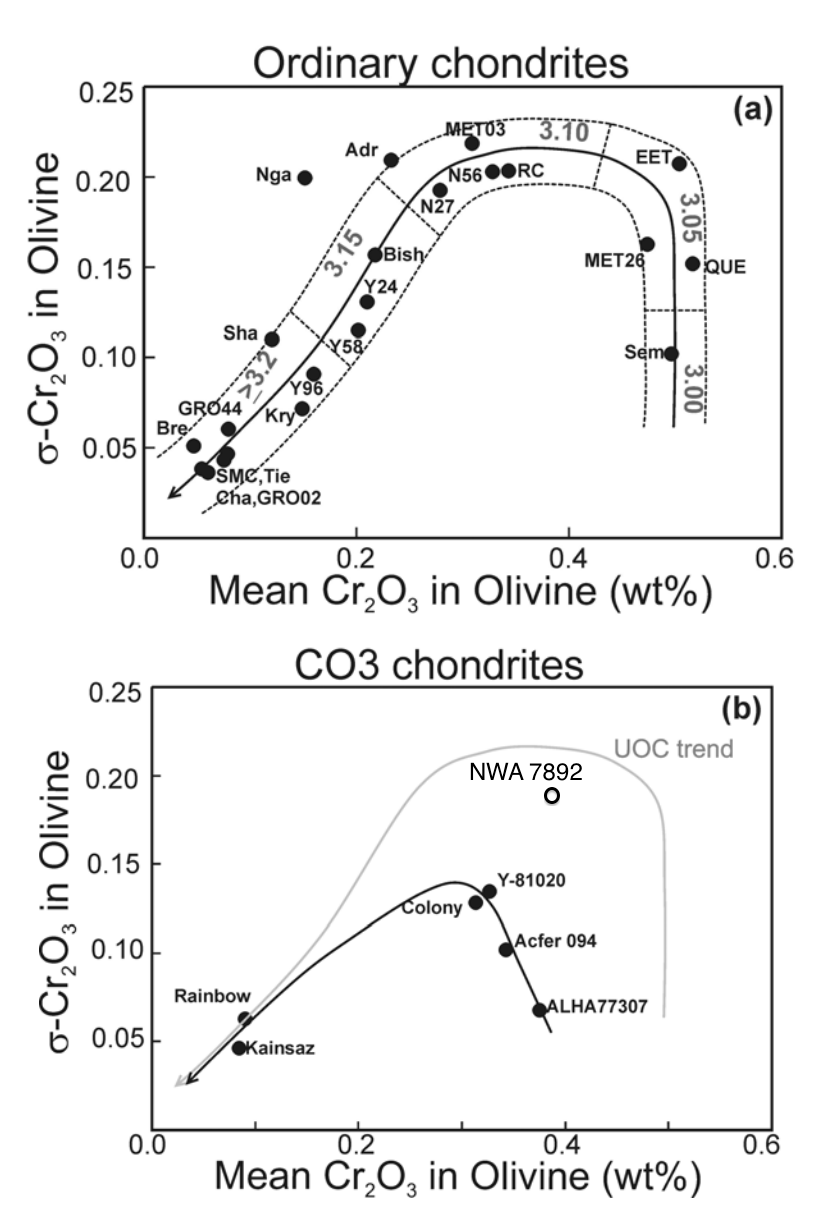 As you can see, this meteorite lies well outside the observed curve. While one might suggest a a classification as high as 3.05-3.10 based on the ordinary chondrite curve, the distribution of CO3s is markedly different.
As you can see, this meteorite lies well outside the observed curve. While one might suggest a a classification as high as 3.05-3.10 based on the ordinary chondrite curve, the distribution of CO3s is markedly different.
While searching for more information, I stumbled across David Weir’s page on primitive CO3 chondrites, and Davidson et al.’s updated graph with additional data, from Petrography of very primitive CO3 chondrites: Dominion Range 08006, Miller Range 07687, and four others.
I’ve taken the liberty of adding NWA 7892.
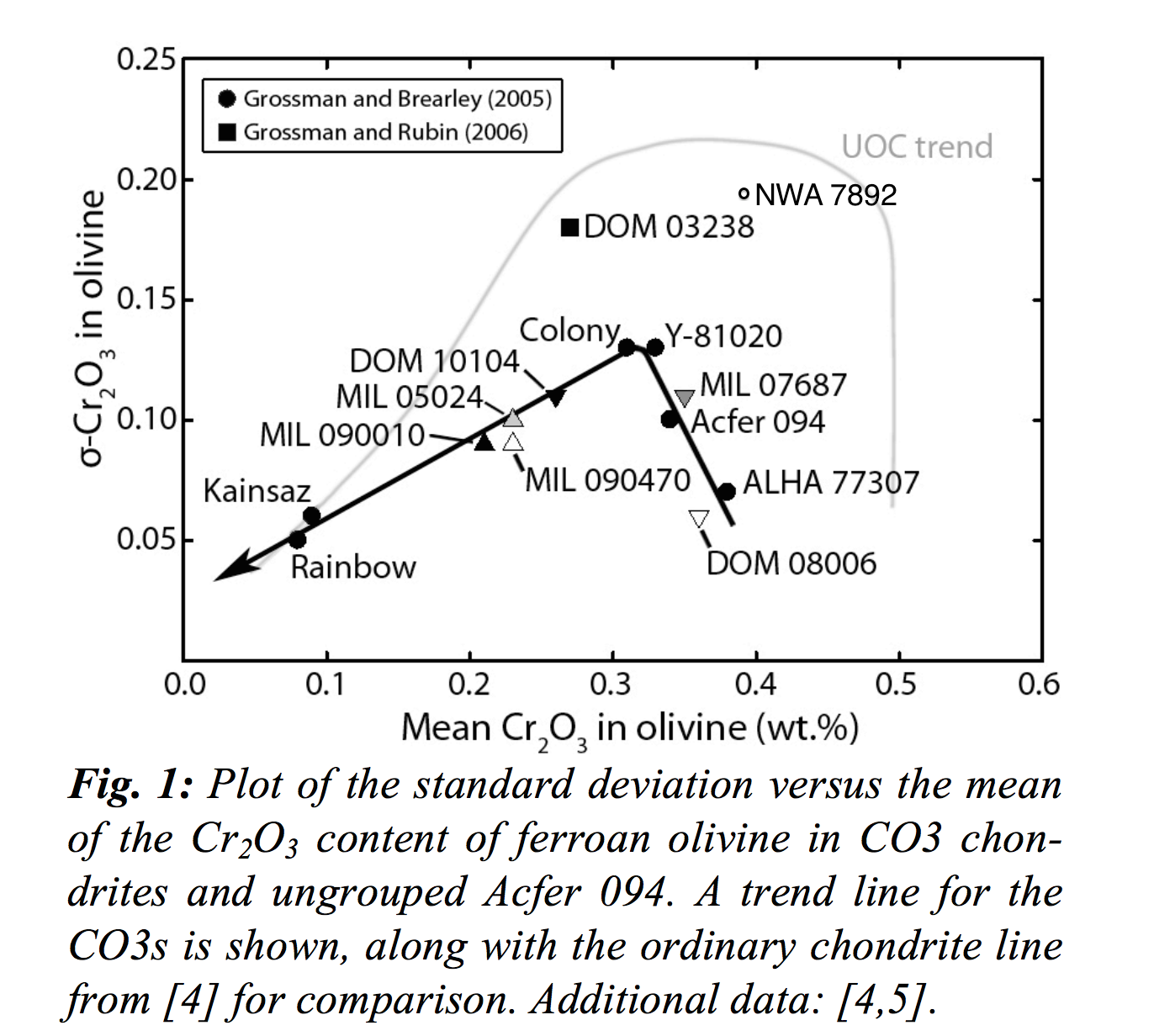 I don’t yet know enough to explain the anomalous Cr2O3 versus σ-Cr2O3 observed here; the existing literature is ambiguous. Davidson et al. (2014) suggest that DOM 03238 is an example of a meteorite preserved while transitioning between 3.00 and 3.1, but this assessment is not corroborated by NWA 7892, which should have a lower mean Cr2O3 than ordinary chondrites (and CO3.00s). Instead, NWA 7892 has both the the highest mean Cr2O3 and largest SD in Cr2O3 contents of any CO3s. The high values might show us that we don’t yet have enough samples of primitive CO3’s to see the full trend, the analysis might have been made differently, or it might just be an anomalous rock. Regardless, NWA 7892 is a very primitive CO3; additional work is ongoing.
I don’t yet know enough to explain the anomalous Cr2O3 versus σ-Cr2O3 observed here; the existing literature is ambiguous. Davidson et al. (2014) suggest that DOM 03238 is an example of a meteorite preserved while transitioning between 3.00 and 3.1, but this assessment is not corroborated by NWA 7892, which should have a lower mean Cr2O3 than ordinary chondrites (and CO3.00s). Instead, NWA 7892 has both the the highest mean Cr2O3 and largest SD in Cr2O3 contents of any CO3s. The high values might show us that we don’t yet have enough samples of primitive CO3’s to see the full trend, the analysis might have been made differently, or it might just be an anomalous rock. Regardless, NWA 7892 is a very primitive CO3; additional work is ongoing.
~2.6 kilograms
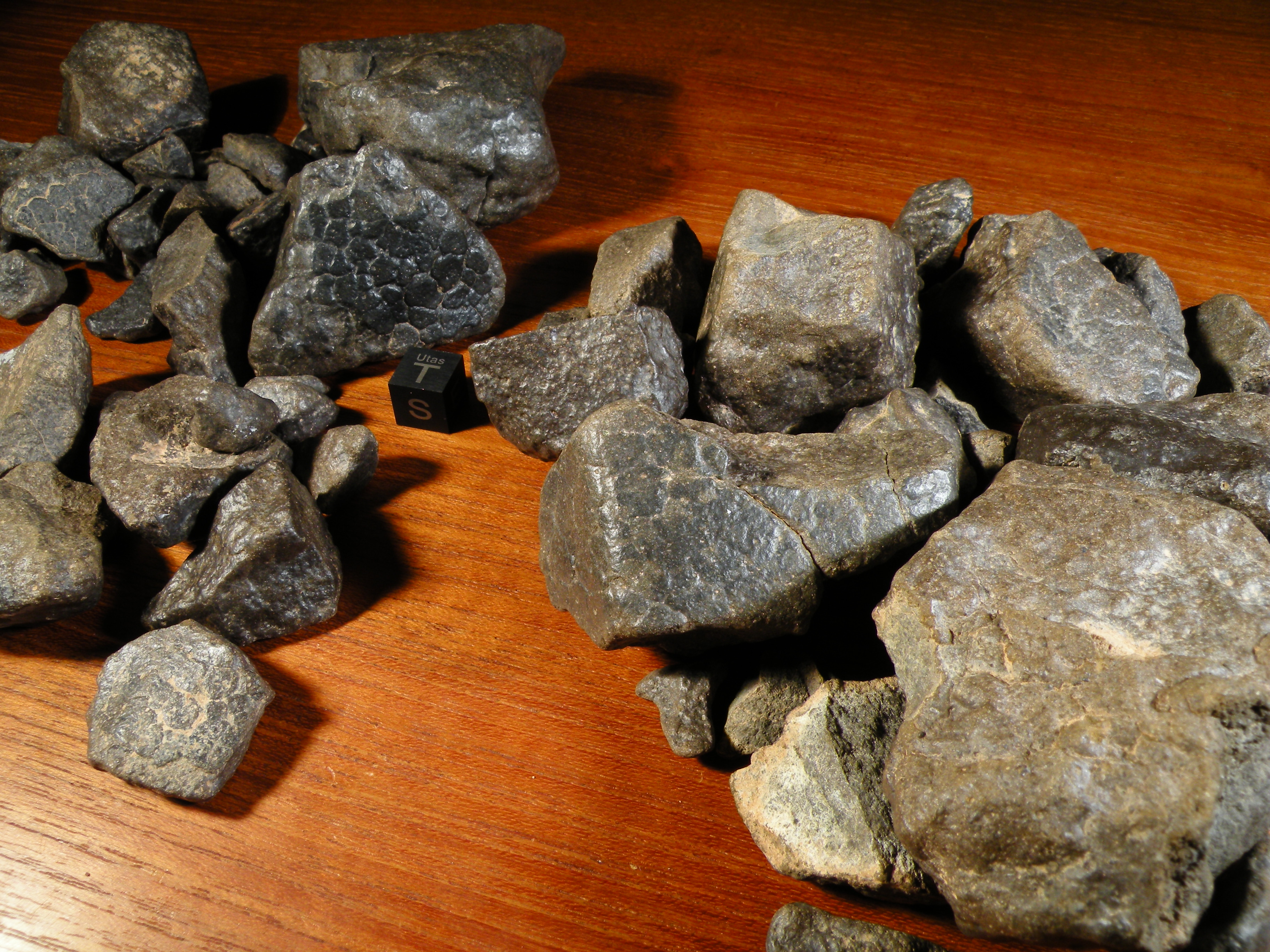
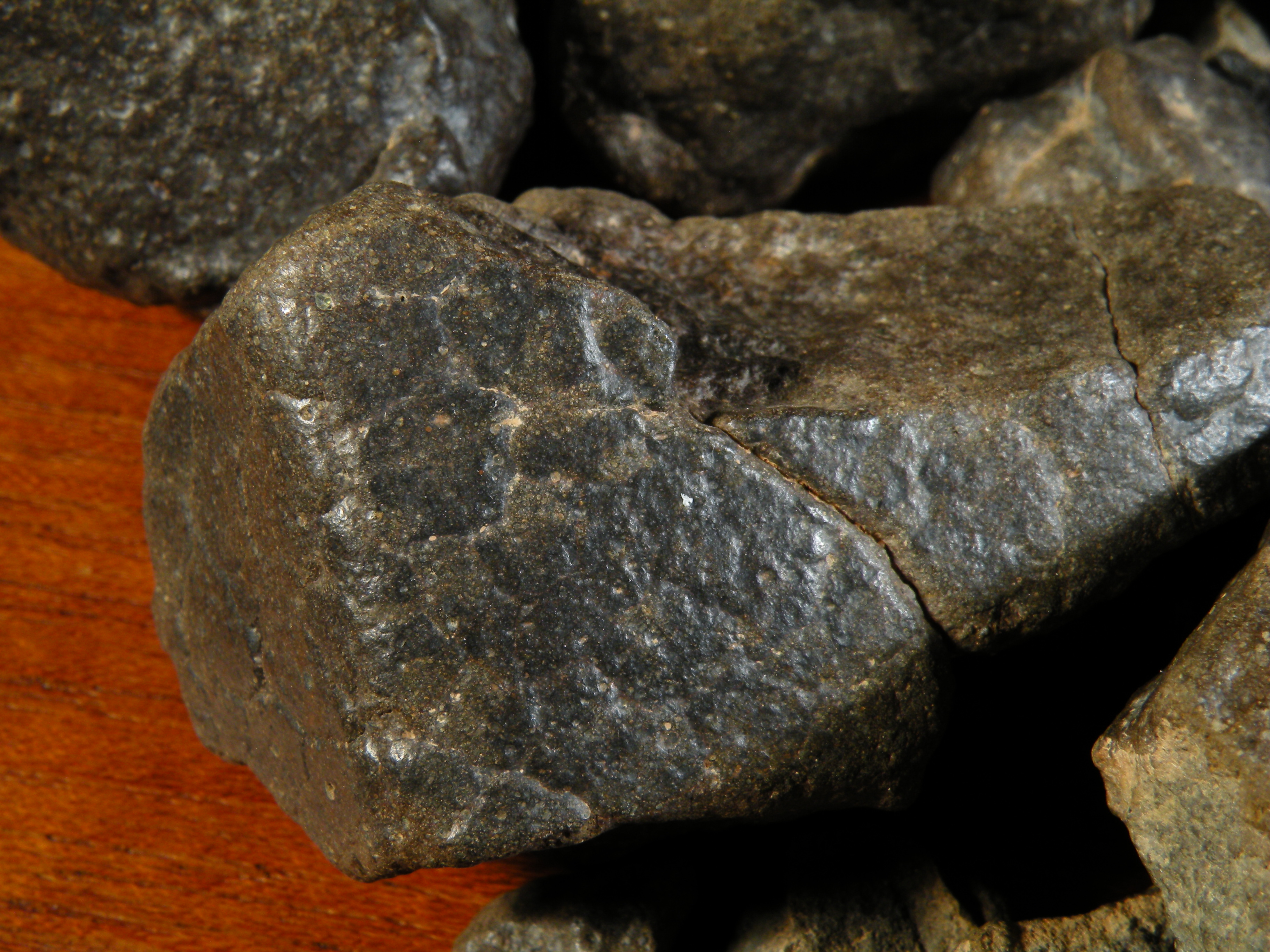
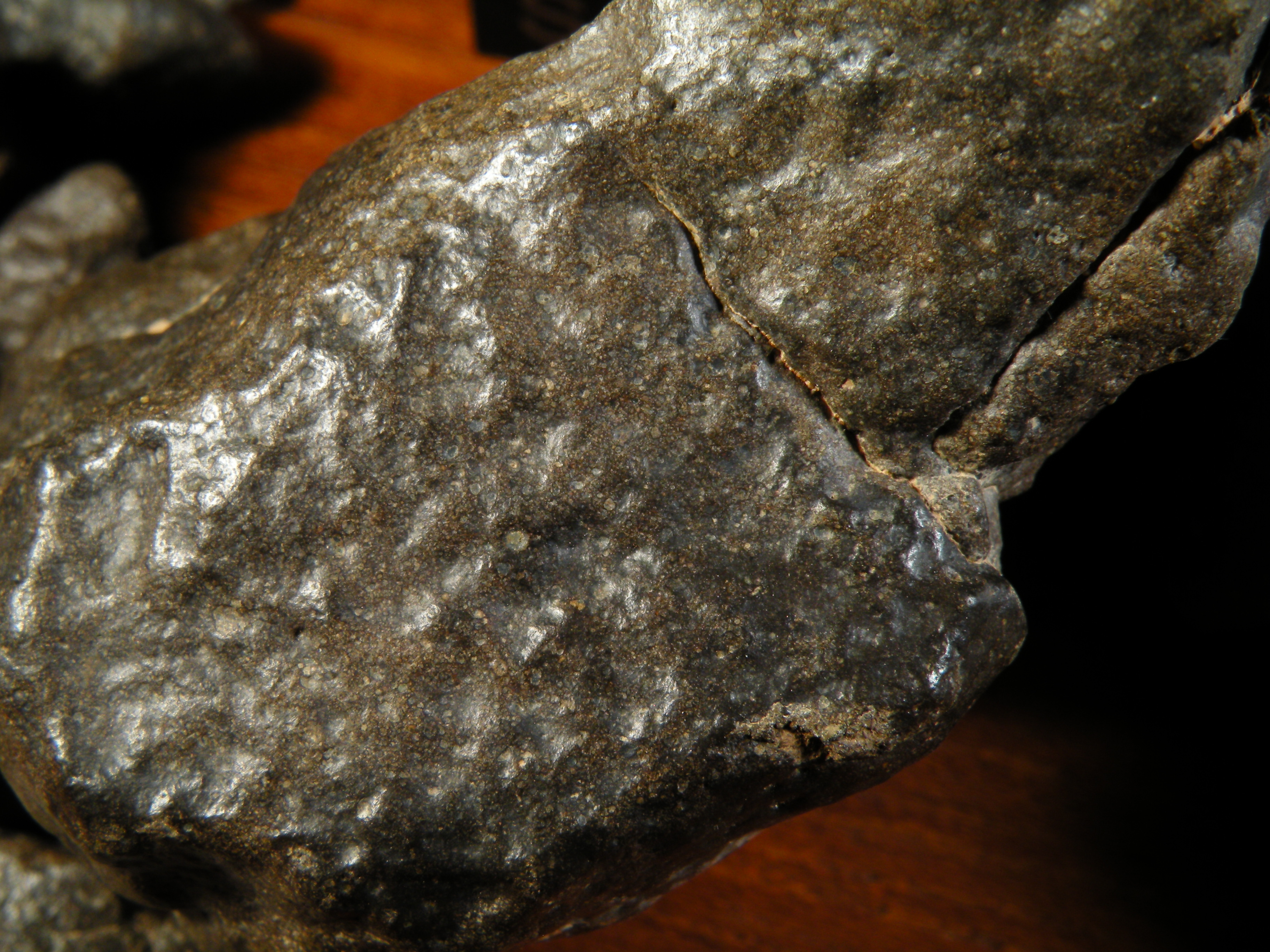
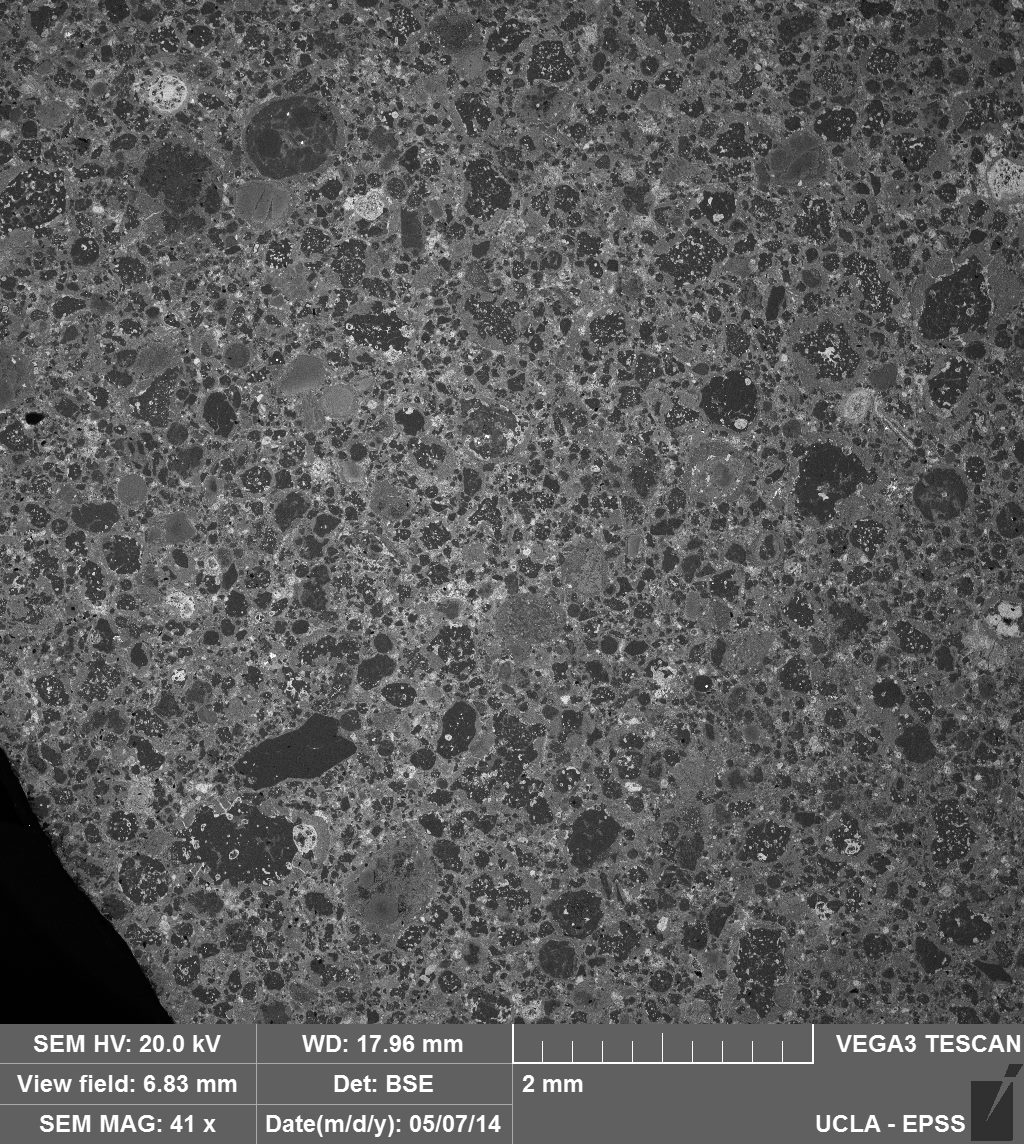
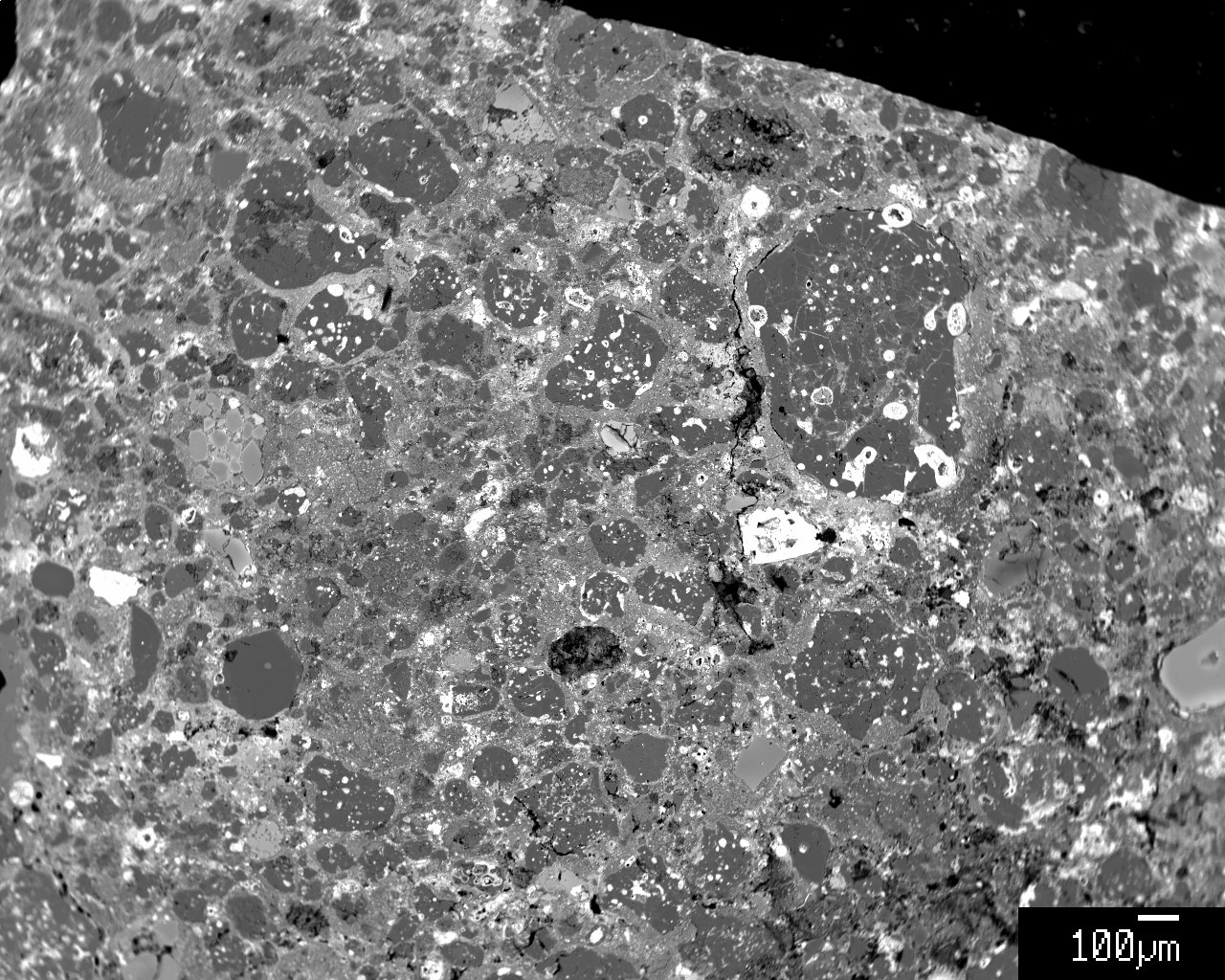 You might be able to see that some chondrules and crystal fragments look a little lighter towards their edges and have darker centers. This is caused by iron from the matrix just starting to diffuse into the FeO-poor olivine and pyroxene grains. This does suggest very mild metamorphism/heating: Semarkona exhibits similar zoning.
You might be able to see that some chondrules and crystal fragments look a little lighter towards their edges and have darker centers. This is caused by iron from the matrix just starting to diffuse into the FeO-poor olivine and pyroxene grains. This does suggest very mild metamorphism/heating: Semarkona exhibits similar zoning.